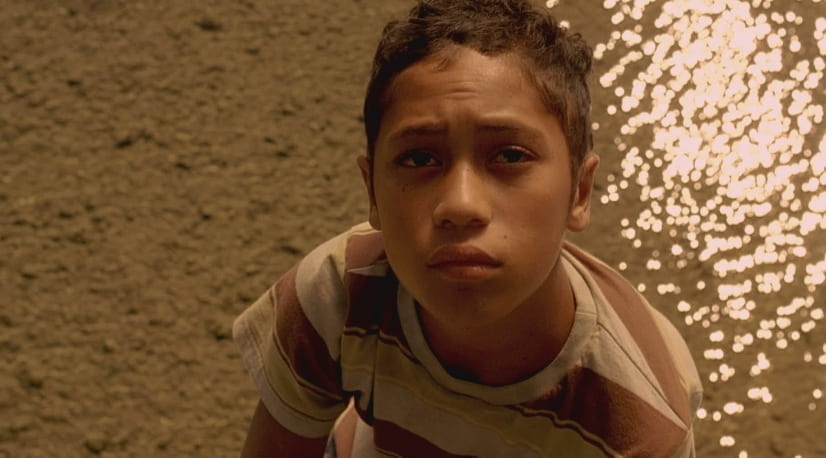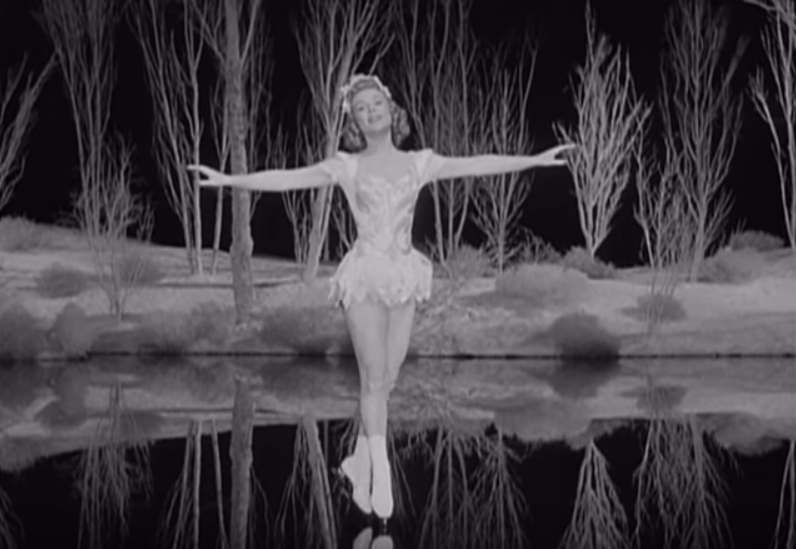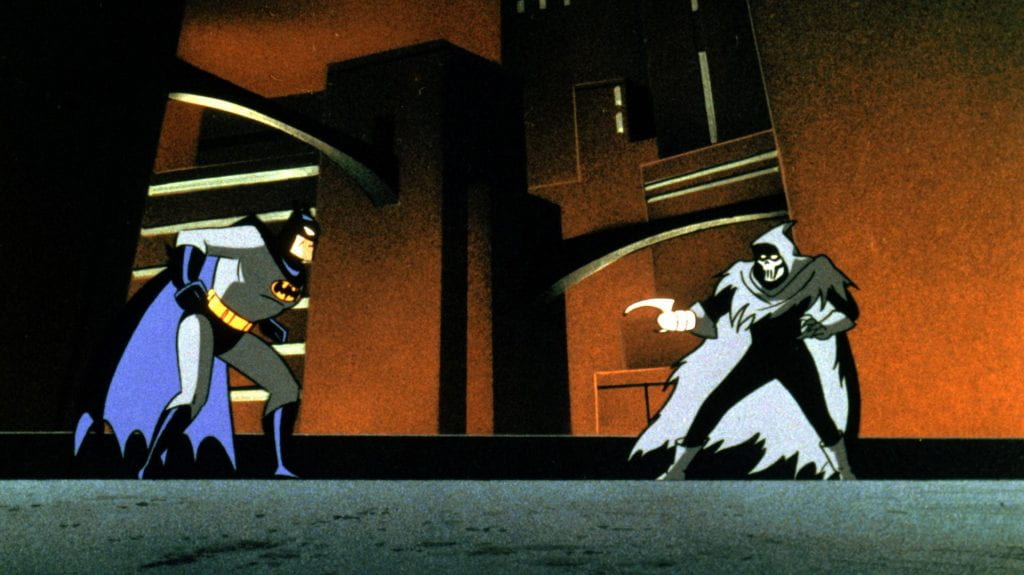Every month, A Place for Film brings you a selection of films from our group of regular bloggers. Even though these films aren’t currently being screened at the IU Cinema, this series reflects the varied programming that can be found at the Cinema and demonstrates the eclectic tastes of the bloggers. Each contributor has picked one film that they saw this month that they couldn’t wait to share with others. Keep reading to find out what discoveries these cinephiles have made, as well as some of the old friends they’ve revisited.
Michaela Owens, Editor | Sun Valley Serenade (1941)
Come November 1, I’m all about Christmas, but the holiday season doesn’t really start until I bask in the coziness that is my annual Christmas movie list. One film that I absolutely have to include even though it isn’t even remotely about the holidays is Sun Valley Serenade, which encapsulates a kind of glamorous winter wonderland that you could only dream of. When I first saw this film, within the first two minutes I was in love. After a second viewing, I realized that it was going to be one of my favorite movies ever.
The story is fairly simple. Phil Corey (big band icon Glenn Miller) and his orchestra are stunned when they discover that the war orphan their pianist Ted (John Payne, Miracle on 34th Street) adopted as a publicity stunt turns out to be the beautiful Norwegian Karen (figure-skating queen-turned-movie star Sonja Henie). Grateful for Ted’s sponsorship, Karen quickly falls for him and wants to get married, but Ted is enamored with their band’s haughty singer (Lynn Bari). Once the band goes to Sun Valley, Idaho for an engagement, Karen and Ted spend more time together — which takes some crafty engineering on her part — until finally Ted realizes Karen is the right woman for him.
This film combines so many of the things that I adore: Henie’s skating, John Payne’s singing, the Nicholas Brothers’ dancing (with an appearance by Dorothy Dandridge, Harold Nicholas’s soon-to-be wife), a perfectly daffy plot, and a tremendous score provided by Glenn Miller and His Orchestra. (Fun fact: the iconic song “At Last” was first introduced in Sun Valley Serenade!) Henie’s figure-skating finale is also nothing short of magical. The use of the contrasting black and white mise-en-scene is exquisite, and the reflections of Henie and her chorus of skaters on the black ice create such a striking, elegant image. The camera doesn’t stay static either, but instead glides right alongside Henie as if it were her partner. It’s just bewitching.
It is easy to scoff at the fluffy confections of classic Hollywood, but there are few movies today that can replicate the effortless, easygoing charm that films like Sun Valley Serenade — and stars like Henie — exuded.
Jesse Pasternack, contributor | Batman: Mask of the Phantasm (1993)
This year, Spider-Man: Into the Spider-Verse (2018) won an Academy Award for Best Animated Film. While Spider-Verse is richly deserving of this honor, it is far from the first animated superhero film to prove that the medium of animation could produce a feature-length film about superheroes that would appeal as much to adults as it did to children. That would be Batman: Mask of the Phantasm (1993) (produced by IU alum and professor Michael Uslan), which is as technically brilliant and thematically rich as any live-action Batman movie.
Mask of the Phantasm follows Bruce Wayne/Batman as he starts investigating the mysterious new vigilante known as the Phantasm. Unlike Batman, the Phantasm kills criminals. As he is conducting his investigation, Wayne encounters an old flame and starts to wonder if he is capable of having a real romantic relationship.
From the first shot of Gotham City, it is clear that Mask of the Phantasm will have excellent animation. The 1940s style architecture of Gotham City lends exterior shots a timeless beauty. Shirley Walker’s excellent score adds a grandeur to the story that matches the stylish visuals. This high production value makes you feel like you are watching a forgotten noir-tinged romantic tragedy that should be on Turner Classic Movies.
This highbrow quality extends to the story and characters. Mask of the Phantasm is a well-plotted mystery that features a more full portrait of Batman as a detective than most of the live-action Batman films (a fact that will change with next year’s The Batman). At the same time, it takes a deep look into Wayne’s psyche, and explores the question of whether he can ever really be happy as well as The Dark Knight did. A scene where Wayne talks to his parents’ grave features exquisite voice acting from Kevin Conroy that is as emotionally affecting as anything you’ll see in a superhero movie, whether it be animated or live action.
There will be animated films about superheroes for as long as there will be films about superheroes. Let us hope that they will have as much visual richness, excellent storytelling, and emotionally affecting characters as Mask of the Phantasm does.
Jack Miller, contributor | Laura (1944)
In honor of “Noirvember,” I decided to celebrate that most American of film genres this month with a screening of one of the great classics of Hollywood cinema: Otto Preminger’s beguiling and heavily stylized mystery film of 1944, Laura. The film, justly celebrated as a masterpiece, is a kind of ghostly examination in multiple levels of obsession, as well as into the icy surface images which underscore such obsessions. Marvelously and implausibly plotted in the way a number of ‘40s films are, this examination traces two effeminate and essentially rotten New York men who try to exert their own designs and idealized notions unto the beauty that is Laura (the luminous Gene Tierney), as well as another, more masculine detective who inevitably falls into the allure of the same postmortem image.
The underlying tragedy of the material here is related to the characters’ failure to understand Laura and her own motivations, whereas Preminger’s detached and highly rational approach to form probingly seeks to understand the mysteries of her personality. Preminger was fond of mounting scenes with a minimum number of edits: through his almost mystical sense of mise-en-scene, he represents the postwar long take style at its splashless peak. During my viewing of the film, it became clear to me why Preminger was deified by the ‘young turks’ at Cahiers du cinéma who launched the French New Wave — in his own way, he’s as much a virtuosic stylist as Hitchcock and Nick Ray, albeit a much more subtle one.
Laura Ivins, contributor | Boy (2010)
Boy (James Rolleston) is the nickname of an 11-year-old Maori kid with a lot of responsibilities, a love for Michael Jackson, and a father just returned from prison who acts like as much of a kid as the actual kids in the film. Boy’s story – though specific to a time and place – feels universal. He lies and puffs up his background to impress other kids, has a crush on a girl who has a crush on an older boy, and feels himself more grown-up than he actually is.
When his idolization of his dad (played by director Taika Waititi) crumbles due to his dad’s neglectful actions, we feel Boy’s devastation acutely. Many of us have been there, have had that moment of realizing a parent or other loved adult fell short of our idolized image, and had to adjust our orientation to the world because of it.
Waititi and his cinematographer, Adam Clark, place the camera at “kid-level” for most of the film, so that we experience the story through Boy and his brother Rocky’s (Te Aho Aho Eketone-Whitu) perspective. Sticking closely to the kids’ point-of-view is a strength of the story. It reminds the audience of the fullness of a kid’s internal life, but also how the limited life experience of youth intensifies moments of loss and disappointment.



